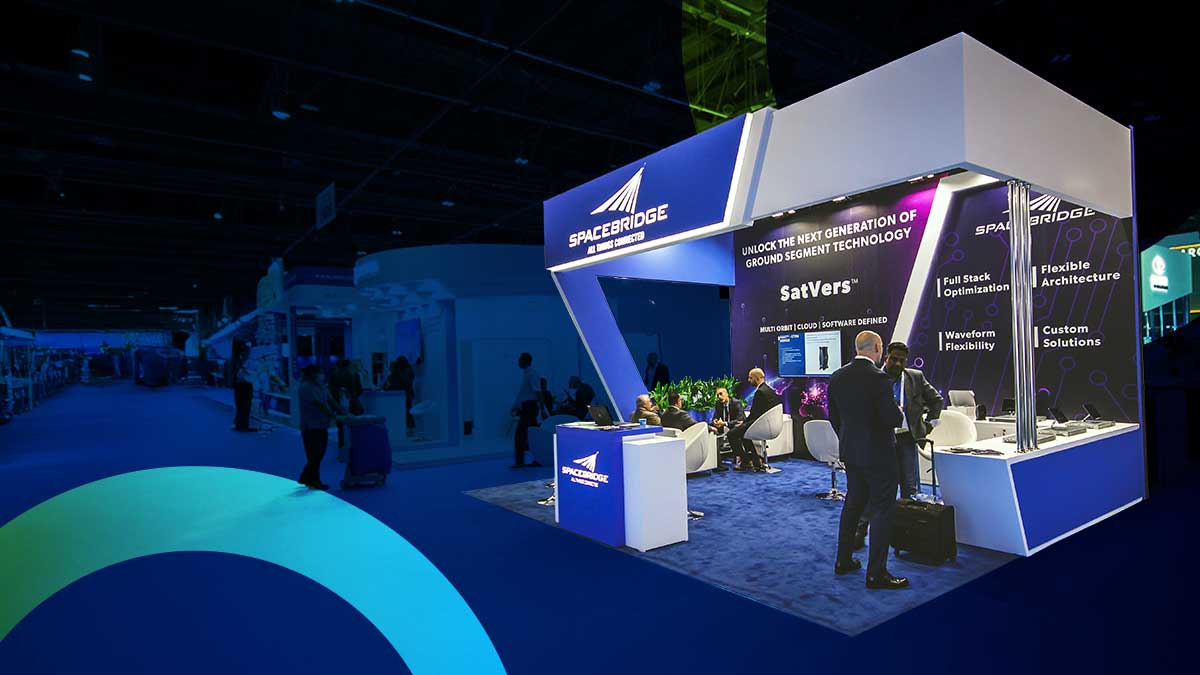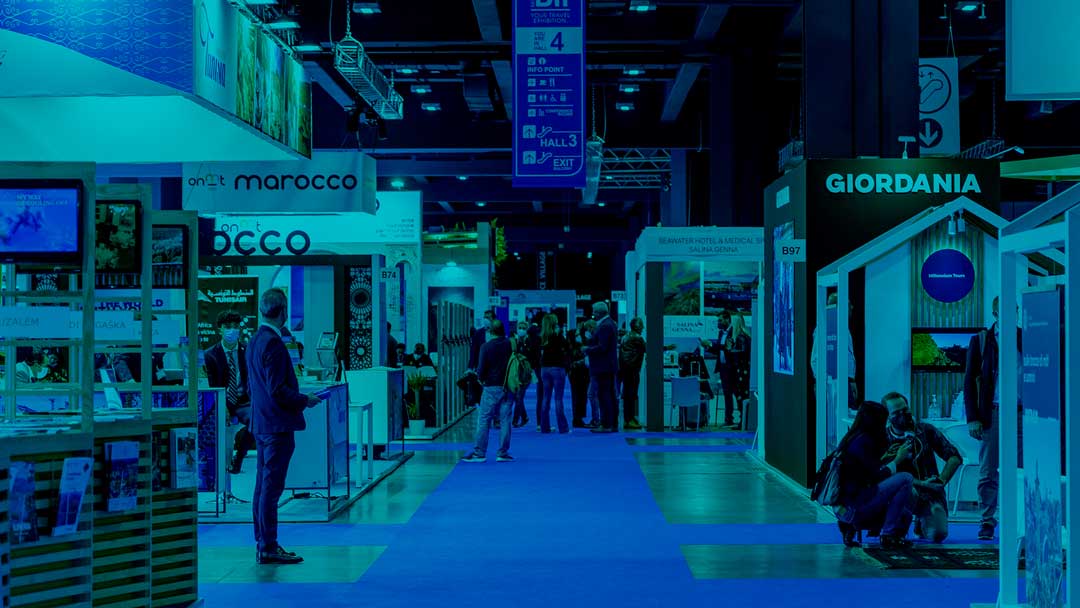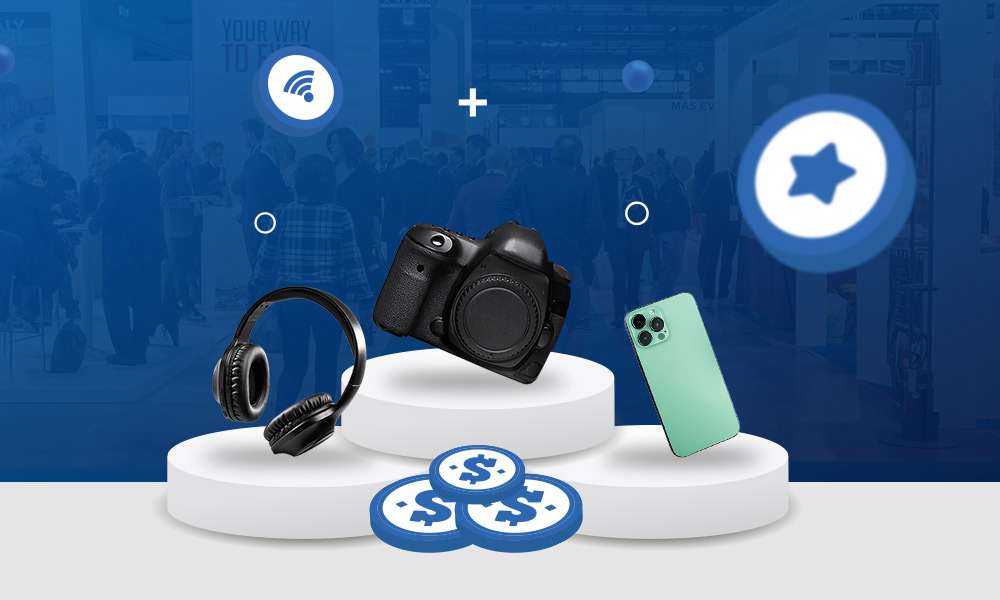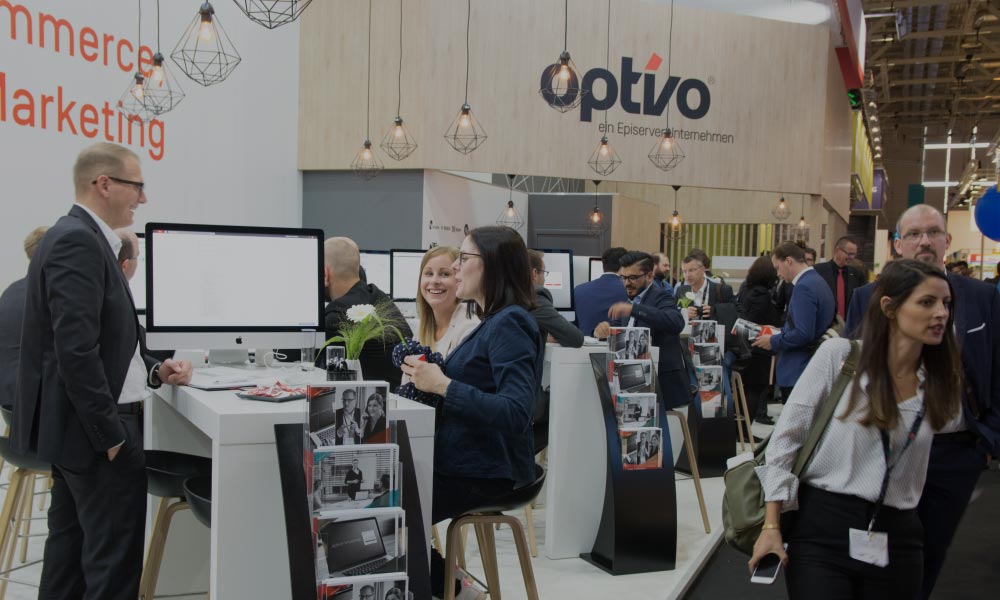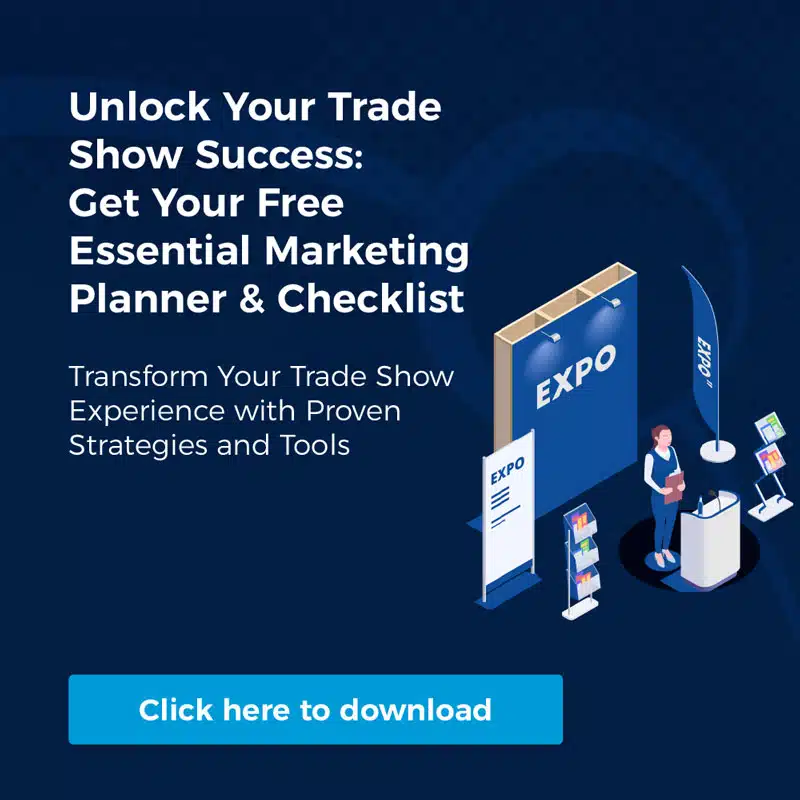B2B Trade Show Marketing Hacks: Generate Leads Without Exhibiting

What if the secret to trade show success wasn’t about having a booth at all? In B2B trade show marketing, many businesses believe that exhibiting is the only path to generating leads. However, some of the savviest players know that attending as a “floor walker” opens up even greater opportunities.
Without the constraints of a booth, you can freely explore the event, connect with key decision-makers, and engage in meaningful conversations—on your terms.
In this post, we’ll uncover the top strategies to help you maximize your trade show presence without the need for an exhibit.
Do Your Homework Before the Show
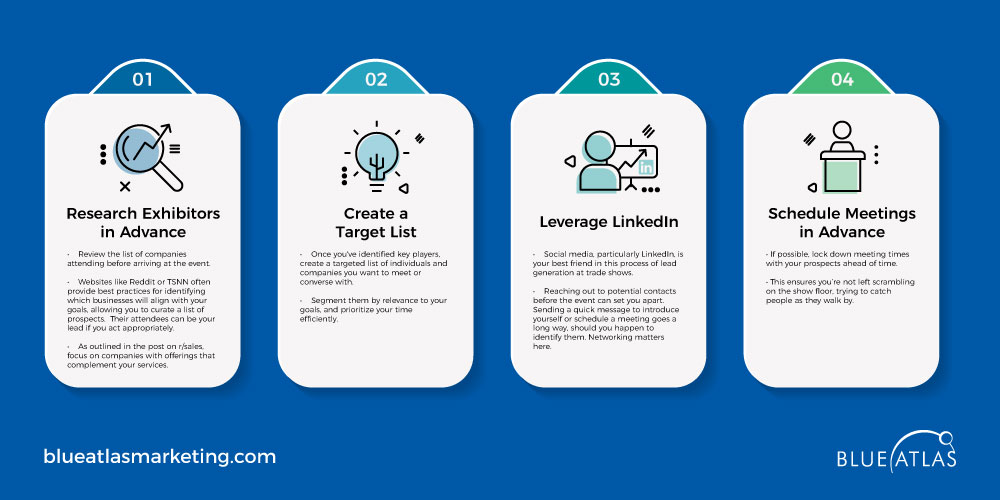
Before you step foot on the trade show floor, the groundwork for lead generation must be laid. As experienced attendees on Reddit emphasize, urbnFarmer said doing your homework is essential.
Knowing what companies will be at the event and identifying attendees aligning with your ideal customer profile (ICP) will give you a competitive edge.
Here are critical steps to ensure you’re prepared:
- Research Exhibitors in Advance:
- Review the list of companies attending before arriving at the event.
- Websites like Reddit or TSNN often provide best practices for identifying which businesses will align with your goals, allowing you to curate a list of prospects. Their attendees can be your lead if you act appropriately.
- As outlined in the post on r/sales, focus on companies with offerings that complement your services.
- Create a Target List:
- Once you’ve identified key players, create a targeted list of individuals and companies you want to meet or converse with.
- Segment them by relevance to your goals, and prioritize your time efficiently.
- Leverage LinkedIn:
- Social media, particularly LinkedIn, is your best friend in this process of lead generation at trade shows.
- Reaching out to potential contacts before the event can set you apart. Sending a quick message to introduce yourself or schedule a meeting goes a long way, should you happen to identify them. Networking matters here.
- Schedule Meetings in Advance:
- If possible, lock down meeting times with your prospects ahead of time.
- This ensures you’re not left scrambling on the show floor, trying to catch people as they walk by.
Doing the groundwork, even without a booth, will set you up for success. Prepare strategically, and you’ll be ready to make the most of every interaction at the show.
Strategic Networking: Maximizing Casual Interactions

Sometimes, the best connections are made during the in-between moments.
As Action_Hank1 pointed out, leveraging downtime like coffee breaks, lunches, or even time spent outside can create opportunities for casual conversations that often lead to lead generation.
Coffee lines and smoking areas might seem mundane, but they can be the perfect places to connect with attendees in a relaxed environment. Beyond the show floor, hotel bars and evening networking events are golden for meeting prospects in a more informal setting.
Attendees tend to drop their guard in these environments, making it easier to spark genuine conversations. As noted by American Image, these relaxed settings can turn casual chit-chat into meaningful business discussions if approached with authenticity and patience.
Finally, attending post-session follow-ups is an effective way to engage with your target audience.
Sit in on sessions where your ideal customer profile (ICP) is likely to be present, and then offer thoughtful insights into the talk afterward. According to Limepack, this positions you as someone who adds value rather than someone who tries to make a sale immediately.
As you genuinely and subconsciously embrace these subtle moments, you’ll find yourself making connections in the least expected places.
The Art of Conversation! Engage, Don’t Sell

One of the biggest mistakes in trade show networking is diving straight into a hard sell. Rather than immediately pitching your products or services, focus on building meaningful conversations.
Start by discussing the attendee’s business, goals, and the challenges they’re looking to solve at the event. This is more engaging and shows genuine interest.
Ask open-ended questions like, “What would make this event a huge success for you?” or “Who’s your ideal customer?”
Building rapport should always come before promoting your offerings. A great strategy is to connect them with valuable contacts or resources that could help their business without immediately pitching yourself.
According to hungry2_learn, conversations that lead to lead generation start with a focus on the other person’s needs, not your own agenda.
Furthermore, engaging in meaningful dialogues rather than pushing a sale can establish trust and long-term connections –an effective trade show marketing strategy.
Echoing this, LinkedIn experts recommend focusing on the attendee’s business and industry insights to keep the conversation natural and fluid. The key is to become a resource, not just another vendor, and to ensure the conversation leads to opportunities beyond the trade show.
Be Where Your Prospects Are for a Strategic Floor Hunting
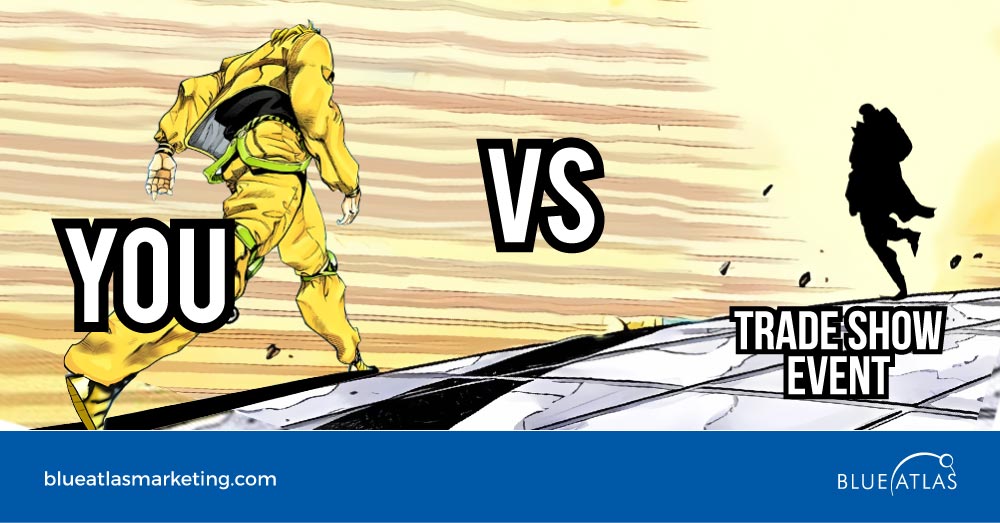
Walking the trade show floor without a booth requires intentionality. Knowing where your target exhibitors and attendees will be located can maximize your chances of lead generation.
Start by identifying key booths, sessions, and networking spots, such as lounges, where your prospects are likely to gather. These areas offer natural opportunities for casual encounters.
Keep a written or mental list of who you’ve met and plan to “bump into” them again later, referencing your previous conversation to create continuity.
Additionally, it is suggested that you map out the trade show layout in advance so that you can strategically navigate high-traffic areas and optimize your time on the floor.
Whether you’re meeting at booths or striking up conversations at lounges, the key is positioning yourself where your target audience will most likely be.
The art of floor hunting is about being deliberate yet approachable. Revisit connections and turn casual interactions into valuable business conversations.
Being in the right place at the right time can create organic touchpoints that lead to meaningful connections.
Post-Event Best Practices
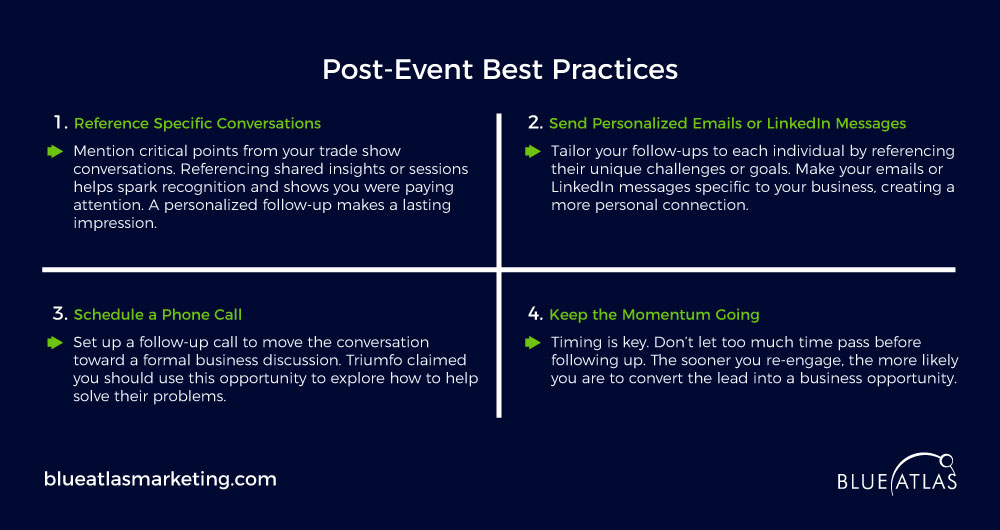
Effective post-event follow-ups are essential to converting conversations into business opportunities. Here’s how to make the most of them:
1. Reference Specific Conversations
Mention critical points from your trade show conversations. Referencing shared insights or sessions helps spark recognition and shows you were paying attention. A personalized follow-up makes a lasting impression.
2. Send Personalized Emails or LinkedIn Messages
Tailor your follow-ups to each individual by referencing their unique challenges or goals. Make your emails or LinkedIn messages specific to your business, creating a more personal connection.
3. Schedule a Phone Call
Set up a follow-up call to move the conversation toward a formal business discussion. Triumfo claimed you should use this opportunity to explore how to help solve their problems.
4. Keep the Momentum Going
Timing is key. Don’t let too much time pass before following up. The sooner you re-engage, the more likely you are to convert the lead into a business opportunity.
Bringing It Together
When approached with the right strategy, walking the B2B trade show floor without a booth can be just as effective as exhibiting.
From thorough preparation to engaging in meaningful conversations and following up after the event, every step plays a crucial role.
By leveraging these best practices, you can generate valuable leads and build strong business relationships.
Looking for more ways to optimize your b2b trade show marketing?
Let Blue Atlas Marketing assist you in crafting a winning strategy with our trade show marketing services. Contact us today to discover how we can enhance your lead generation and maximize your marketing ROI.


